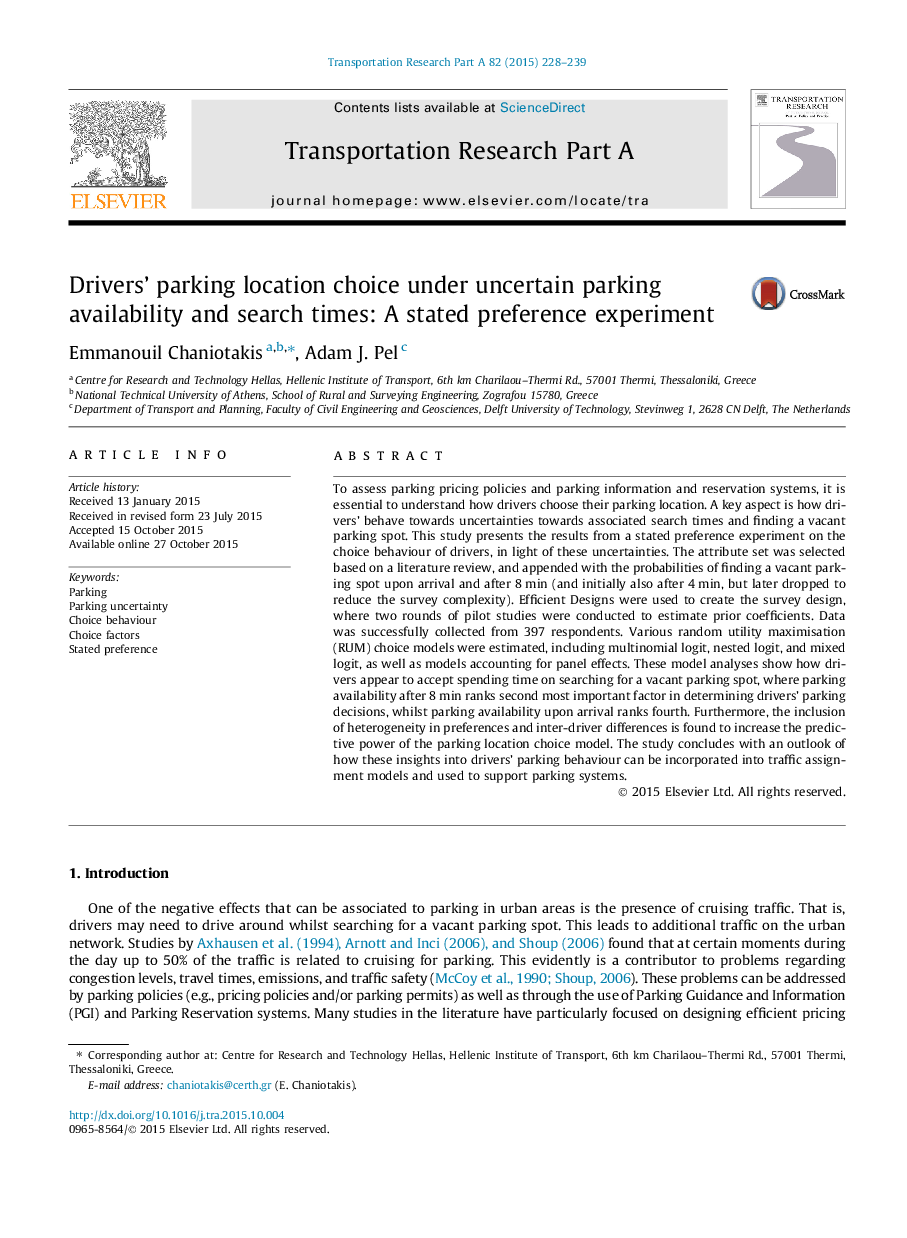| Article ID | Journal | Published Year | Pages | File Type |
|---|---|---|---|---|
| 6781088 | Transportation Research Part A: Policy and Practice | 2015 | 12 Pages |
Abstract
To assess parking pricing policies and parking information and reservation systems, it is essential to understand how drivers choose their parking location. A key aspect is how drivers' behave towards uncertainties towards associated search times and finding a vacant parking spot. This study presents the results from a stated preference experiment on the choice behaviour of drivers, in light of these uncertainties. The attribute set was selected based on a literature review, and appended with the probabilities of finding a vacant parking spot upon arrival and after 8Â min (and initially also after 4Â min, but later dropped to reduce the survey complexity). Efficient Designs were used to create the survey design, where two rounds of pilot studies were conducted to estimate prior coefficients. Data was successfully collected from 397 respondents. Various random utility maximisation (RUM) choice models were estimated, including multinomial logit, nested logit, and mixed logit, as well as models accounting for panel effects. These model analyses show how drivers appear to accept spending time on searching for a vacant parking spot, where parking availability after 8Â min ranks second most important factor in determining drivers' parking decisions, whilst parking availability upon arrival ranks fourth. Furthermore, the inclusion of heterogeneity in preferences and inter-driver differences is found to increase the predictive power of the parking location choice model. The study concludes with an outlook of how these insights into drivers' parking behaviour can be incorporated into traffic assignment models and used to support parking systems.
Related Topics
Physical Sciences and Engineering
Engineering
Civil and Structural Engineering
Authors
Emmanouil Chaniotakis, Adam J. Pel,
